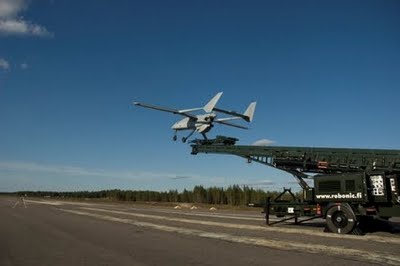SELEX Galileo is proud to announce a new contract for its PicoSAR AESA surveillance radar. The contract will see three PicoSAR radars sold to a non-NATO export customer as evaluation models, with the potential for a full production run upon successful tests.
PicoSAR will be integrated into the customer’s lightweight, tactical Unmanned Aerial System (UAS).
Bob Mason, VP Marketing and Sales for the Radar and Advanced Targeting Line of Business said: “This order recognises the astonishing capability PicoSAR provides in a small package, guaranteeing latest generation AESA for air vehicles such as tactical UAS, light helicopters and small fixed wing ISR aircraft.”
The key to PicoSAR is the use of AESA technology in a small, compact configuration. Using low power, solid state Transmit/Receive Modules (TRM) within its array, the PicoSAR radar is more reliable than conventional radar systems. Its compact size, low weight and low power consumption permit installation in parallel with electro-optical/infrared sensors even on platforms with limited payloads.
The PicoSAR radar has been demonstrated on a number of fixed and rotary wing platforms, manned and unmanned, in Europe, the US and the Middle East and is now being operated by 4 customers.
Background Information
PicoSAR delivers a high resolution Synthetic Aperture Radar (SAR) imaging and Ground Moving Target Indication (GMTI) capability that permits new and existing platforms to easily acquire a true, all-weather ground mapping and surveillance capability.
PicoSAR is one of a family of AESA radars that includes the Vixen family of fire control radars and the Seaspray family of surveillance radars which are in operation in the United States, on the USCG HC-130H aircraft and under contract for the UK Royal Navy Surface Combatant Maritime Rotorcraft (Future Lynx). PicoSAR utilises common technology and techniques used on SELEX Galileo’s other radar programmes.










